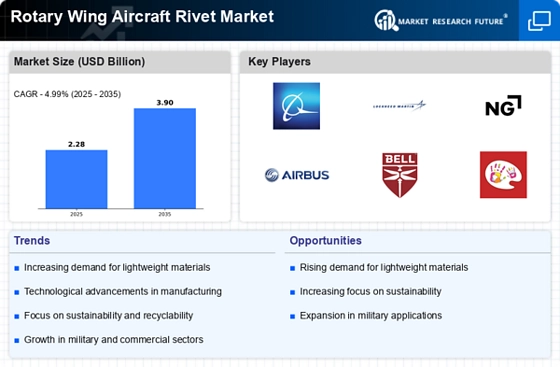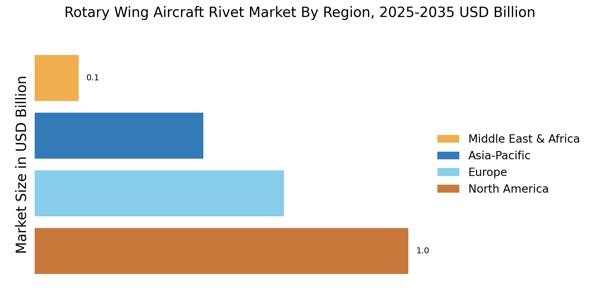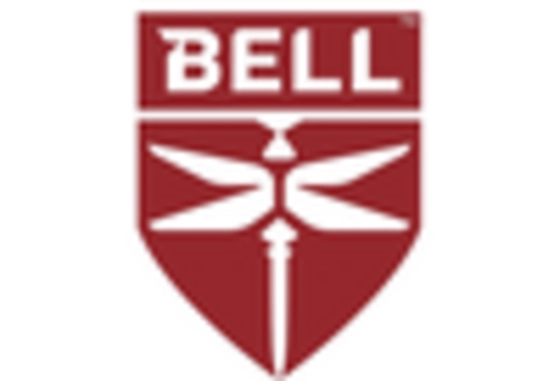The Rotary Wing Aircraft Rivet Market is characterized by a dynamic competitive landscape, driven by technological advancements and increasing demand for lightweight, durable materials. Key players such as Boeing (US), Lockheed Martin (US), and Airbus (FR) are at the forefront, each adopting distinct strategies to enhance their market positioning. Boeing (US) focuses on innovation in materials science, particularly in developing advanced rivet technologies that improve aircraft performance and reduce weight. Lockheed Martin (US), on the other hand, emphasizes strategic partnerships and collaborations to bolster its supply chain capabilities, ensuring timely delivery of components. Airbus (FR) is actively pursuing regional expansion, particularly in Asia-Pacific, to tap into emerging markets, thereby diversifying its operational footprint. Collectively, these strategies contribute to a competitive environment that is increasingly focused on technological differentiation and operational efficiency.
In terms of business tactics, companies are localizing manufacturing to reduce lead times and optimize supply chains. This approach is particularly evident in the Rotary Wing Aircraft Rivet Market, which appears to be moderately fragmented, with several players vying for market share. The collective influence of key players is significant, as they leverage their technological expertise and established networks to navigate the complexities of the market.
In August 2025, Boeing (US) announced a partnership with a leading materials science firm to develop next-generation rivets that utilize composite materials. This strategic move is likely to enhance Boeing's competitive edge by offering lighter and more resilient components, aligning with the industry's shift towards sustainability and efficiency. The collaboration underscores Boeing's commitment to innovation and positions it favorably against competitors.
In September 2025, Lockheed Martin (US) revealed plans to expand its manufacturing capabilities in the southeastern United States, focusing on advanced rivet production. This expansion is expected to streamline operations and reduce costs, thereby enhancing Lockheed Martin's ability to meet growing demand. The strategic importance of this move lies in its potential to solidify Lockheed Martin's market presence and improve supply chain reliability.
In July 2025, Airbus (FR) launched a new initiative aimed at integrating AI technologies into its production processes, including rivet assembly. This initiative is indicative of a broader trend towards digital transformation within the industry. By leveraging AI, Airbus aims to enhance precision and efficiency in manufacturing, which could lead to significant cost savings and improved product quality.
As of October 2025, the competitive trends in the Rotary Wing Aircraft Rivet Market are increasingly defined by digitalization, sustainability, and the integration of advanced technologies. Strategic alliances are becoming more prevalent, as companies recognize the need to collaborate to stay ahead in a rapidly evolving landscape. Looking forward, competitive differentiation is likely to shift from traditional price-based competition to a focus on innovation, technological advancements, and supply chain reliability, reflecting the industry's response to changing market demands.


















Leave a Comment